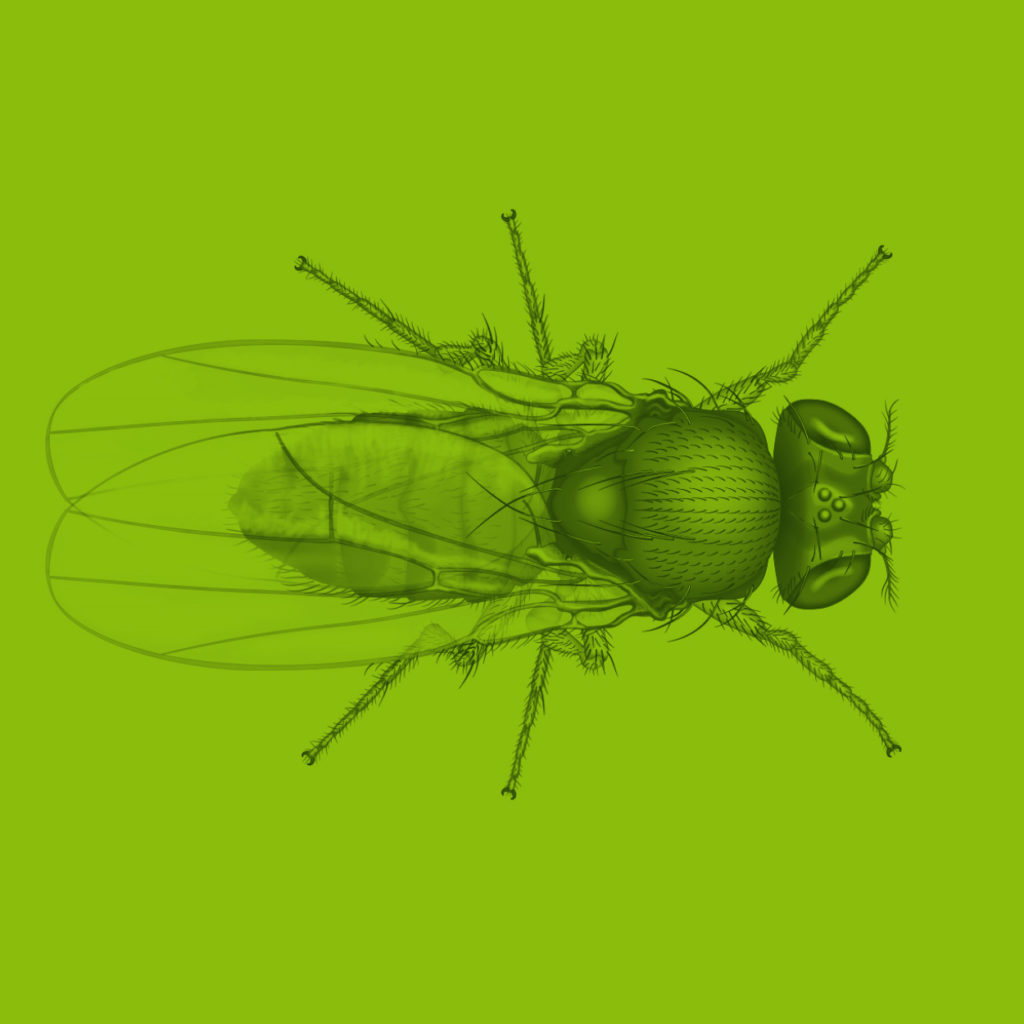Fruit fly
(Drosophila spp.)
Depending on the species, fruit flies are 2 to 6 mm long and reddish yellow, brown or grey colored. They have dark brown, black or yellow drawings. Their 5 to 6 mm large larvae are usually white or yellowish white.

Prevention tips
- Wash foods such as fruit, berries and vegetables lukewarmafter after purchase and check for flies or larvae. Store only in small quantities, covered and as cool as possible (preferably below 10 degrees Celsius)
- Collect fruit and vegetable waste separately from waste in a closed container, dispose of it regularly and compost it if possible
- Dispose of rotting fruits, vegetables and kitchen waste immediately
- Don’t leave drinks open, wash out empty containers completely
- Ventilate rooms regularly and thoroughly to free the air from fermenting gases and other lures
- Fly screens can prevent the animals from entering
- Use Fruit Fly Rescuer only indoors, so that no additional fruit flies from the surrounding area are attracted by the lure
Multiplication
In the vicinity of fermenting foods, the females are particularly willing to mate. They lay up to 400 eggs on it just 24 hours after fertilization. After three to five days, the eggs pupate into larvae (maggots). Depending on the temperature, the Imagines (adult, sexually mature animals) hatch after three to 30 days. Even in nature, up to 15 generations are created annually. In the living area there are even more due to the heat. A female can theoretically have 16 million descendants after 30 days.
They live for ten days to several weeks.
Diet
While the flies feed mainly on plant juices, honeydew and nectar, the larvae (maden) eat ripening and rotting fruits, vegetables, fermenting juices (e.g. fruit juices, beer, wine) and rotting plant material (e.g. compost heaps). However, the larvae mainly feed on the microorganisms (bacteria, yeasts, fungi) that occur at the same time.
In doing so, they accelerate the rotting of fruits and vegetables and delay microorganisms and germs.
Life
In nature, the animals occur in damp deciduous forests, at forest edges, in the settlement area and generally everywhere where plant material rots, e.g. in compost heaps.
They are often introduced with fruits or vegetables or fly into living rooms from the outside.
Benefits
Fruit flies are part of food webs and therefore an important food source for other insects, spiders, reptiles, amphibians and fish. They pollinate plants and decompile organic material. As a result, they bring this back into the ecological cycle and thus also contribute to soil fertility.
Fruit flies mainly pollinate orchids and aronstick plants, whose scent of fermenting foods attracts them. Examples are the approximately 60 species of the Black Aronstab as well as the species Buebophyllum careyanum and Specklinia.
They also serve as food for carnivorous plants.
Scientific value
The fruit fly is today the most researched creature, mainly because it can be easily modified by genetic mutations. Through cross-experiments with only four pairs of chromosomes, researchers were able to gain important insights into genetic development, DNA and evolution. They have already received eight Nobel Prizes for their work.
Seventy-five of the genes involved in the development of diseases in humans have a counterpart in fly.
By the way: The German entomologist Johann Wilhelm Meigen described the fruit fly for the first time in 1830. It is believed to be from Africa.